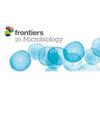揭开口腔菌群与结直肠癌之间的隐秘联系:双向孟德尔随机分析和荟萃分析
IF 4
2区 生物学
Q2 MICROBIOLOGY
引用次数: 0
摘要
方法 采用双样本孟德尔随机分析法(TSMR)探讨口腔菌群与结直肠癌之间的因果关系,并以反方差加权法(IVW)作为评估这种因果关系的主要方法。口腔菌群的数据来自人类舌头和唾液样本,所有队列人群均来自亚洲。此外,还使用了两个独立的外部队列来验证阳性结果,并对最终结果进行荟萃分析。最后,为了平衡阳性口腔菌群对 CRC 的影响,还进行了多变量孟德尔随机分析(Multivariate Mendelian Randomization,MVMR)。其中,嗜血杆菌、镰刀菌、唾液支原体和鼠疫杆菌在两个测试队列中得到了验证。耐人寻味的是,在综合 3 个队列的结果进行荟萃分析后,有 16 种关联仍然显著。在训练队列中,MVMR 分析表明,嗜帽毛囊虫ochracea 和唾液支原体 Metamycoplasma 保留了统计学意义。在其中一个测试队列中,唾液解脲支原体、nginosus 链球菌和 s Streptococcus s sanguinis 仍具有统计学意义。结论 嗜血杆菌、镰刀菌、唾液支原体和鼠疫莫吉杆菌与 CRC 的发生和发展有确凿的因果关系。本文章由计算机程序翻译,如有差异,请以英文原文为准。
Unveiling the hidden link between oral flora and colorectal cancer: a bidirectional Mendelian randomization analysis and meta-analysis
ObjectiveThe impact of oral flora on intestinal micro-environment and related diseases has been widely reported, but its role in colorectal cancer (CRC) remains elusive.MethodsA Two-sample Mendelian Randomization (TSMR) analysis was conducted to explore the causal relationship between oral flora and CRC, with the Inverse-Variance Weighted (IVW) serving as the primary method for evaluating this causal relationship. Data on the oral flora were derived from human samples from the tongue and saliva, with all cohort populations originating from Asia. In addition, 2 independent external cohorts were used to validate the positive results and perform a meta-analysis of the final results. Lastly, to balance the effect of positive oral flora on CRC, a Multivariate Mendelian Randomization (MVMR) analysis was also performed.ResultsThe TSMR analysis revealed that 17 oral flora may have a causal relationship with CRC in the training cohort. Among them, s Haemophilus, g Fusobacterium, s Metamycoplasma salivarium, and s Mogibacterium pumilum were validated in two testing cohorts. Intriguingly, after integrating the results of the 3 cohorts for meta-analysis, 16 associations remained significant. In the training cohort, MVMR analysis demonstrated that s Capnocytophaga ochracea and s Metamycoplasma salivarium retained statistical significance. In one of the testing cohorts, s Metamycoplasma salivarium, s Streptococcus anginosus, and s Streptococcus sanguinis retained statistical significance. In the other testing cohort, s Metamycoplasma salivarium, s Haemophilus, and g Fusobacterium remained significant.Conclusions Haemophilus, g Fusobacterium, s Metamycoplasma salivarium, and s Mogibacterium pumilum have a solid causal relationship with the occurrence and development of CRC.
求助全文
通过发布文献求助,成功后即可免费获取论文全文。
去求助
来源期刊

Frontiers in Microbiology
MICROBIOLOGY-
CiteScore
7.70
自引率
9.60%
发文量
4837
审稿时长
14 weeks
期刊介绍:
Frontiers in Microbiology is a leading journal in its field, publishing rigorously peer-reviewed research across the entire spectrum of microbiology. Field Chief Editor Martin G. Klotz at Washington State University is supported by an outstanding Editorial Board of international researchers. This multidisciplinary open-access journal is at the forefront of disseminating and communicating scientific knowledge and impactful discoveries to researchers, academics, clinicians and the public worldwide.
 求助内容:
求助内容: 应助结果提醒方式:
应助结果提醒方式:


